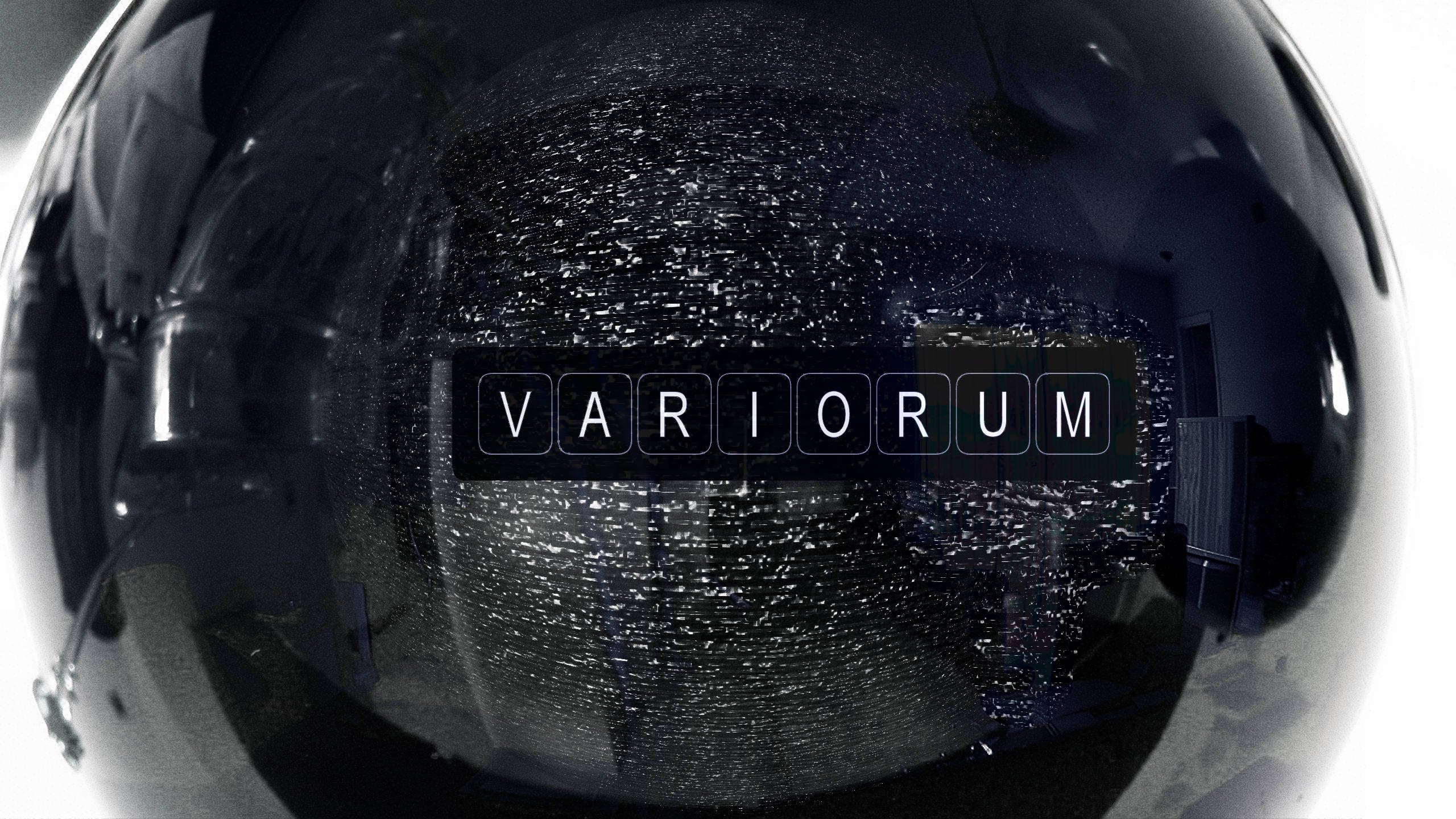-
Posts
283 -
Joined
-
Last visited
-
Days Won
1
Everything posted by Variorum
-
Just because I love beating a dead horse ? If you change a couple words in this sentence, I think it would apply perfectly to the VST interface: "MIDI is a technical standard that describes a communications protocol, digital interface, and electrical connectors that connect a wide variety of electronic musical instruments, computers, and related audio devices for playing, editing, and recording music." https://en.wikipedia.org/wiki/MIDI I'd like VST to go this route. (No horses were harmed in the writing of this post ?)
-
I've always had a hard time believing a company can own an interface. If there were actual code libraries involved that were created by a company, that represents a real product, but VST is just an interface, a collection of function definitions that need to be included in/supported by a DAW and a plugin. It's essentially a standard, not a 'product'. It's a standard that's supported (by real code) in a majority of DAWs, plugins, and other audio software. Unfortunately, it's that ubiquity that makes it almost impossible for a new standard to catch on. If that standard was close enough to allow an easy transition for existing software, Steinberg would almost certainly sue. I don't expect anything to change in the near future, I just wish... ?
-
The actual discontinuation of support for VST2 plugins only applies to Steinberg products (i.e. Cubase). I would think that virtually all other DAW manufacturers will continue to recognize VST2 plugins until there just aren't that many left in circulation. <rant on> It bothers me a lot that a private company controls a standard as ubiquitous as the (VST) audio plugin interface. Why isn't this an open standard supported by an independent group? I don't think that I'm the only one annoyed by some of the decisions made by Steinberg in the past, like initially crippling Midi support in the VST3 interface (they eventually backed off on that). VST is just an interface! There is no required code behind it. Steinberg should relinquish control of it, or a new 'open' standard should be developed... Fat chance that will catch on, though ? Ok, all done. <rant off>
-

How to import SF2 files into cakewalk?
Variorum replied to MercenaryToaster's topic in Instruments & Effects
Recommending that to a newbie is like giving a bottle of vodka and the keys to the Ferrari to your teenage son... ? -
Oh sure... blame the poor devs... ?
-
Mike will give you a hint here... These are still present because the Style Dials use them.
-
Style Dials run on top of Cakewalk VST's. Sonitus plugins are DirectX based.
-
Yeah, I like to have it on... except when I'm using my Distorted Trash Can or Drunk Karaoke Singer VSTs ?
-
I think he just means that if you click on note C5 in the PRV and then move your mouse up to C6, you get to hear every note along the way. I'm pretty sure there's no way to turn off note preview when you click in the PRV. @scook's solution of muting the track is probably the only way to silence it. I've never had a problem with it, but it would probably be an easy task to add an option to one of the PRV menus to enable/disable the preview (?) (I think OP meant to say glissando rather than crescendo ?)
-
Hmmm... I have to admit that I haven't used FX Chains much (or at all really), but after spending a while playing around with them in the Pro Channel, I'm having a hard time finding a reason to justify opening up the PC API for dedicated modules. We already have the ability to add any VST (or several in one chain) as a PC module and control multiple parameters with the 6 knobs and buttons available, including adjusting multiple parameters with a single knob or button with variable ranges. If you need to access the VST directly, it just takes a couple clicks at most. You can even customize the bitmaps! If anything, I think I'd rather just have a little more flexibility to add more controls to the FX Chain GUI, but for the actual purpose of a PC control, just having the half dozen customizable controls available is probably enough for fine tuning a mix... Just my opinion ?
-
That stability may be why the API isn't public. If you get a bunch of knuckleheads (ahem ?) writing faulty PC plugins, then Cakewalk starts locking up/crashing and the users complain about the lack of stability and blame it on the fact that free software is buggy and Brand X DAW is so much better... They'd probably want to implement a QC procedure on any plugins and that takes time and costs $$$ Still be nice to have it available, though... all of my code is perfect and never crashes ?
-
I think the API for the Pro Channel interface is proprietary... if it's been published, I haven't seen it. I'd guess that companies like Boz and Softube requested the docs or had a partnership of sorts to develop their plug-ins. But if it were to become available... ?
-
Just as an aside, in this video, the guy is testing Behringer's ASIO Driver for the Zenyx family devices (available here) with the UMC22. Apparently the ASIO driver works with the UMC22 even down to a pretty respectable latency. Might be worth a try if you want to keep the UMC22 as a backup interface.
- 35 replies
-
- 1
-

-
Here's an updated version of CSMultiCompander called... CSMultiCompanderV2! The same functionality is available, but it uses a Spline Curve instead of the sliders... should be more intuitive. It's a different component than the original version, so any previous presets you've saved won't apply to this one. It's also effectively a replacement for CSResponseCurve since it contains the same functionality (better, actually... fixed some minor issues) When it's in Velocity adjustment mode, hitting keys on your Midi device will display an indicator of the velocity in the window (just for @ZincT ?) Get it here.
-

Edit Articulation Maps In Batch
Variorum replied to OB-Lix Original Music's topic in Articulation Maps
NP... It could do a lot more with a little work, but I really have no idea what would be useful. ?♂️ -

Edit Articulation Maps In Batch
Variorum replied to OB-Lix Original Music's topic in Articulation Maps
I whipped up a little Articulation Map Editor that should solve your Transpose problem ? It's a hidden page (not available from the main page) because I'm lazy. Get it here. Excerpt from website... The only functionality included in this version is Transposing Note events. This covers Articulation Maps that control key-switches. Select the Articulation Map you want to modify in the Articulation Maps panel. All Groups contained in the map will be displayed in the Groups panel. Click to select one or more Groups to modify. You can use standard Windows controls (i.e. Hold Ctrl to select/deselect multiple items and hold Shift to select a range). Set the amount to transpose each note/key using the numeric control on the right. The range is +/-48, which is 4 octaves up or down. Click modify to start the process. The first time an Articulation Map is modified, the program will save a copy with the added extension “.orig” in the same folder, just in case. A message box will pop up to confirm the operation. If the selected transposition causes any note range to go out of bounds ( less than ‘0’ or more than ‘127’), the program will notify you of the specific articulations that would fail and abort the entire modification operation without changing the file. If this occurs, you may need to modify the articulations individually in Cakewalk. -
Only good for a specific need, but nice to add to your collection ?
-
Wellllll... That would be a good idea, but this plugin only affects CC's, not velocity ? I'll probably make a revised version of MultiCompander that uses my new spline control. I'll make sure it shows pressed keys when modifying velocity... 'cause Arturia does it! Not to mention theirs looks prettier than mine.
-

Midi FX plugin that changes the shape of a volume pedal curve
Variorum replied to gmp's topic in Cakewalk by BandLab
Hey @gmp, I made a dedicated response curve MidiFX that might suit your needs a bit better. Check out the post here. -
Here's a specialized plugin for adjusting the response curve of a keyboard control (ie. Volume, Modulation, etc,) called CSResponseCurve Of course, you can use it for any CC, I just made it to address a specific issue raised by @gmp to balance volume response between an external keyboard/TG and a VST. Download it here as usual. Hope it works!
-

Midi FX plugin that changes the shape of a volume pedal curve
Variorum replied to gmp's topic in Cakewalk by BandLab
No problem. I'll try to finish up the final version soon... -

Midi FX plugin that changes the shape of a volume pedal curve
Variorum replied to gmp's topic in Cakewalk by BandLab
Probably not switchable in this plugin... a log response will just be a little more "natural". I may split this plugin out to a dedicated Response Curve MidiFX that will use a simple spline curve or a linear line. Any plugins after that will likely be VST-Midi plugins... unless Steinberg completely cripples it in the future ? -

Midi FX plugin that changes the shape of a volume pedal curve
Variorum replied to gmp's topic in Cakewalk by BandLab
I made a couple modifications to MidiCompander to get rid of the glitch and display a more meaningful graph when it's set to anything other than Velocity. I'm working on changing the algorithm to be logarithmic rather than linear for CC's, but if you want to try out this interim version you can download it here. You'll probably get the "This type of file may damage your computer, blah blah blah" warning because you're downloading a DLL directly. You can ignore it... If you just copy it over your existing CSMultiCompander.dll file it will work... you won't have to uninstall, re-register, etc. It would be best to do this when Cakewalk isn't running Select the Ctrl Chng button and type 7 into the box below it to modify Volume. Move the High, Low, and Offset sliders and the graph will show you how the Volume will be modified. You can stomp your volume pedal while playing your keyboard to test your adjustments in real-time. I'll update the plugin on the main site when I've finished the log modifications. -

Midi FX plugin that changes the shape of a volume pedal curve
Variorum replied to gmp's topic in Cakewalk by BandLab
The MIDI buffer delay only applies when you're playing back an existing (recorded) track. Real-time input (if you're playing your keyboard) is passed to the VST (or passed back out) instantly. MidiCompander can be used to balance the response curves to multiple instruments, but it can have an annoying "jump" at the bottom or top of the range. I'll see if I can smooth that out. -




